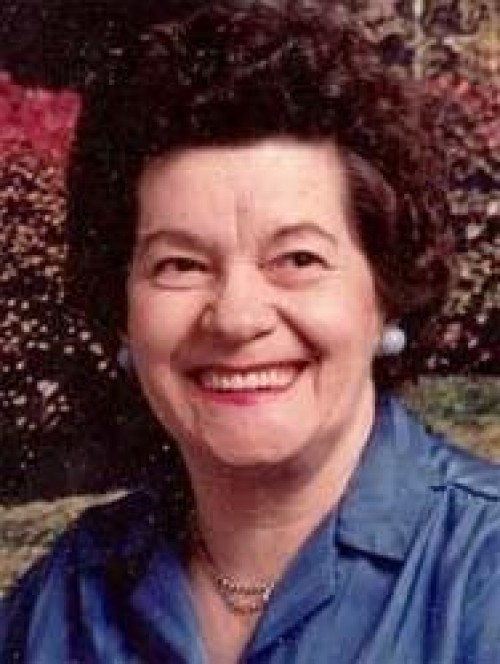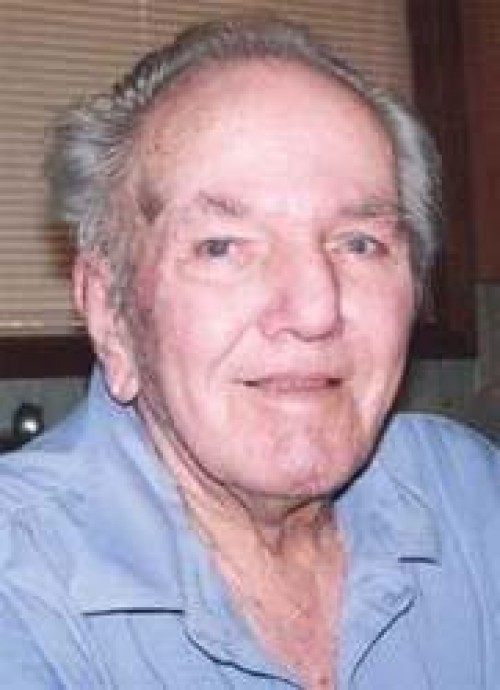
Eula Josephine Lagrange Larose
April 28, 2008
Adam "T-Dent" LaCoste
April 30, 2008“The alarm clock buzzes at 5 a.m., and another day begins for Anadee McGee and her husband John Modrynisky. This early morning time is spent getting dressed, eating breakfast and talking without interruption. It is a few minutes of peace, the quiet before the daily storm. In an hour, the couple will have to start getting their autistic son Drew, 7, ready for school.
“I literally have to drag him out of bed and bring him to the table for breakfast,” says McGee. “It’s not like he is still asleep. It’s just part of his routine.”
After a cereal-and-milk or grits-and-milk breakfast, Drew takes a bath and gets dressed. Socks first, followed by underwear, shirt, pants and belt, then his shirt gets tucked in before his shoes are slid on. “Getting dressed is a ritual that has to be done in order every day,” says Drew’s mom, smiling. “If not, his whole morning is shot.”
McGee has to follow the same route from the family’s home in Dularge to Maria Immacolata Catholic School in Houma. Any deviation from the normal path causes Drew to become confused and anxious. This tension could bring on a tantrum that can last an hour … or more.
“Routine is very important to autistic children,” said local pediatrician Dr. Kenneth Cruise of the Center for Pediatric and Adolescent Medicine of Houma and Thibodaux. “It gives them a sense of control in a world that appears chaotic.”
According to kidshealth.com, autism and autism spectrum disorders (ASD) are complex developmental disabilities that appear in children between the ages of 18 months and three years. They affect the child’s ability to perceive, express and react to the world around them and communicate with others. This often causes unusual reactions to normal sounds and lights. Even being touched by certain fabrics or gently by another person may feel uncomfortable to a child with autism.
“Imagine standing in a room with flashing lights and loud noises bombarding your senses constantly and you can’t control them,” Cruise explains. “Researchers say that’s how children with autism experience the everyday world.”
At school, Drew takes part in normal class activities. His teachers and classmates are aware of the 7-year-old’s condition and offer him help when he needs it. “The teachers are really patient with him and go the extra mile to make sure he understands what they are studying,” McGee explains. “The other students in the class are all understanding and accept Drew the way he is.”
Even at school, organization plays a crucial part in Drew’s ability to focus and learn. His teachers and parents prepare him for any changes in his routine days in advance so he will not become frustrated and confused. Standardized testing days, for instance, are certain to cause stress. “I had to prepare him for over a week that they would be taking tests all day,” McGee remembers. “His teacher said he handled it pretty well, but you never know.”
It’s the never knowing that really stresses McGee and her husband. Because it’s impossible to prepare for every situation, the couple worries a lot about what might happen if something sets off a tantrum. “So you appreciate the good days and learn from the bad ones,” she said.
Drew has two close friends, Rhett Lambas and Colin Reynolds.
They are the only two children Drew’s own age that he spends any length of time with. “This is not an uncommon characteristic of autistic children,” says Beth Hodnett, licensed psychologist for the Lafourche Parish School Board. “These children tend to gravitate toward only a few other people outside of their immediate families. These close friends are individuals whose personalities are not frustrating.”
Many autistic children prefer the company of older children, Hodnett said. They are usually less hyper and are more patient than younger kids.
Structure is not the only technique that Drew’s parents use to get him through the day. They also have him on a host of medications to help him manage everything from anxiety to hyperactivity. “Drew is on four different medications,” his mother says matter-of-factly. “He takes Vivans, Tenex, Alexa and Topamax.”
McGee is aware that this sounds like a lot of medication, but she knows that without it her son couldn’t function, not even sleep.
McGee didn’t start Drew on medication right away. In fact, she tried non-medication behavioral techniques but none of them were effective by themselves.
She says her reluctance to introduce medicine into Drew’s treatment was out of fear of losing her son’s personality. “I was afraid that medication was going to turn him into a zombie.”
This initial reaction is nothing new to Cruise. “Parents are always resistant to put their children on mood-altering or modification medicines. They are afraid it will destroy all the good things about their children, but what they come to realize is that the medication sets these children free so that they can experience a fuller life.”
Cruise also warns parents that finding the right medicine can take time and that many different medications may need to be administered before the desired effect is achieved. “It’s important that parents of autistic children realize that drugs are not a cure, only a tool used to help manage behavior.” He stresses that parents should seek the proper therapy to further their child’s development.
Hodnett agrees. “It takes time for autistic children to achieve certain developmental benchmarks. Parents who feel their child is showing autistic symptoms should contact a pediatrician and then their local school district to begin the process of getting them involved in the therapies the school system provides.”
Early Steps is a free at-home therapy program provided by the state for developmentally delayed children. The program is available for children until they are three years old.
Dawn Spinella, president of the Bayou Chapter of the Autism Society of America, says that her organization provides parents with contacts to help in their child’s treatment.
“We point parents in the right direction and offer a support system so that they don’t feel alone in the struggle of raising a child with autism,” Spinella said.
Feeling alone is something McGee and her husband experienced when Drew was diagnosed. “There just isn’t one place you can go to in finding answers,” she says. “It’s like you have to figure things out for yourself, then you tell another family what you’ve done and then they tell some. It really is a frustrating and slow process.”
Spinella doesn’t deny that the Tri-parishes needs better resources to deal with the rising number of autism cases but feels progress is being made in the medical and educational communities. “Pediatricians are looking for the symptoms more in infants and teachers are going to programs to learn how to help educate and communicate with autistic students.”
Hodnett adds that the Lafourche Parish School Board sends volunteers to training seminars to help improve the educational environment of special needs students. “These teachers return and then show other faculty members the techniques they’ve learned. This peer-to-peer training is critical in helping administration and educators better serve the needs of all students.”
McGee also sees progress being made in the services provided to help autistic children. “One obstacle that I feel is hampering the education of people that don’t come in contact with autistic children is the ‘Rain Man’ stereotype and the continuous disagreement over the cause of the disability.”
According to McGee, the autism community is separated into two camps: those who believe autism is caused by vaccines and those who don’t. “I for one don’t feel it’s the shots,” says McGee. “Science will have to show me proof that it’s the shots before I believe it.”
McGee believes that environment and genetics play more of a role in children developing autism, a belief shared by Cruise. “We are just beginning to find out how people are genetically predisposed to certain illnesses and conditions,” he said. “The pharmaceutical companies removed all the preservatives and traces of mercury from the shots over five years ago.”
According to Cruise, the only current vaccine with any trace of mercury is the flu shot. A person ingests more of the metal eating fish than he or she get from the vaccine.
Cruise believes that research needs to continue to see if the shots are a contributing factor to the onset of autism but parents should not stop getting their children immunized. “The diseases we are trying to prevent with the shots are very serious and can cause extreme health issues and even death if parents refuse to get their children vaccinated.”
The controversy surrounding immunizations began with a 1998 study done by British doctor Andrew Wakefield that claimed to have found a link between MMR shots and autism. It was because of his study’s findings that the preservative thimerosal was removed from the vaccines in the early part of this decade. Since the study’s release, many of Wakefield’s colleagues have withdrawn their endorsement because only 12 children were involved in the study.
“Whatever the cause, parents need to quit looking for blame and start focusing on doing whatever it takes to make their child’s life better,” said McGee.
Another treatment option making its way through the autism community is the removal of heavy metals from the body through chemical chelation. The procedure is long, explains Cruise, and offers no cure. “There is no scientific evidence that chelation therapy improves the symptoms of autism.” He said that if it does improve symptoms, then it’s likely that the child is suffering from something other than autism. “There are illnesses that mimic autism and are caused by exposure to mercury and other heavy metals.”
McGee says she’s heard stories from parents whose autistic children have undergone chelation therapy. “From what they’ve told me, I don’t think I would ever put Drew through that one. I’d rather spend my time and money educating myself and getting my son the therapy and medicine he needs.”
She does admit that since finding out she is pregnant with her third child that she isn’t eating seafood that may contain higher-than-normal levels of mercury.
Spinella feels that becoming educated on the latest therapies and medicines and not looking for miracles is what parents need to do. “The Bayou Chapter of the Autism Society of America provides guest speakers and even registration fees to area conferences for parents wanting to learn more about autism treatment.”
Spinella adds it would be easier for parents to get their children the proper therapy and medical treatment if insurance companies would provide better coverage. “There is currently a bill before the Louisiana Legislature that would require insurance companies to provide better coverage of autism treatments,” she said.
The bill Spinella hopes will pass is House Bill Number 958, introduced by state Rep. Franklin Foil of Baton Rouge.
The bill seeks to end insurance companies’ discrimination against children with autism and ASD and provide them with evidence-based, necessary medical treatments needed to live more productive lives, such as speech, occupational, and applied behavioral analysis therapy for up to $50,000 per autistic child per year. The House Insurance Committee held a hearing on the bill today.
According to the Autism Society of America, it is estimated that the lifetime cost of caring for a child with autism ranges from $3.5 million to $5 million, and that the United States faces an annual cost of $90 billion for autism research, Medicaid wavers, educational spending, housing, transportation, insurance costs, non-covered expenses and employment, in addition to related therapeutic services and caregiver costs.
And still, life goes on for McGee, her husband, Drew, and their growing family. They look toward the future with guarded hope for their son and other children diagnosed with autism.
Drew Modrynisky, 7, plays “Heads Up, Seven Up” in class at Maria Immacolata Monday. * Photo by KEYON K. JEFF













